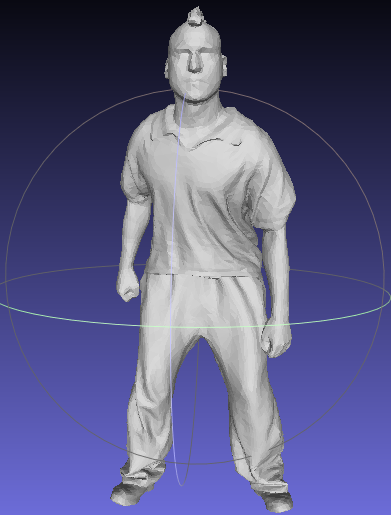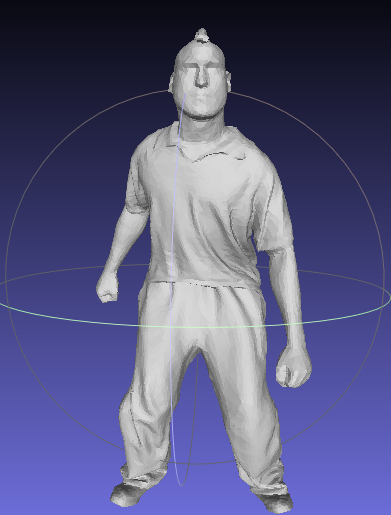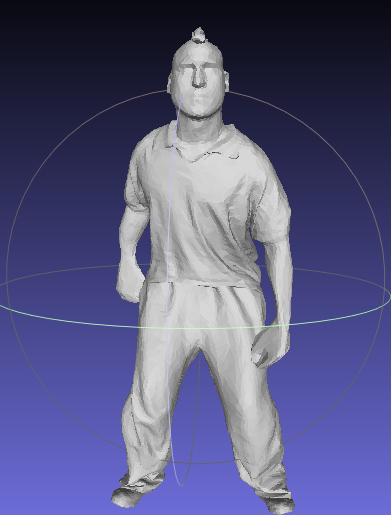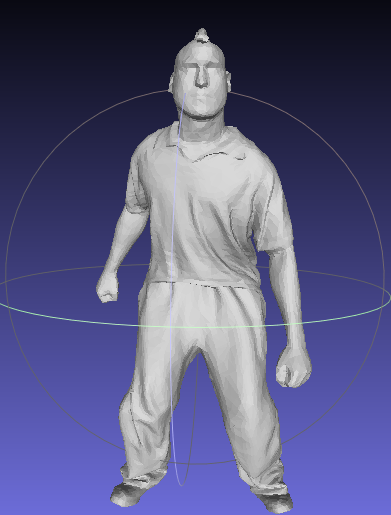This repository includes the source code of the paper "Quasi-Newton Solver for Robust Non-Rigid Registration", (CVPR2020), https://arxiv.org/abs/2004.04322.
Authors: Yuxin Yao, Bailin Deng, Weiwei Xu and Juyong Zhang.
This code is protected under patent. It can be only used for research purposes. If you are interested in business purposes/for-profit use, please contact Juyong Zhang (the corresponding author, email: [email protected]).
The code is compiled using CMake and tested on Ubuntu 16.04 (gcc5.4.0) and on Windows with Visual Studio 2015. Follow the following steps to compile the code:
-
Make sure Eigen and OpenMesh is installed.
-
Create a build folder 'build' within the root directory of the code
-
Run cmake to generate the build files inside the build folder, and compile the source code:
- On linux, run the following commands within the build folder:
$ cmake -DCMAKE_BUILD_TYPE=Release .. $ make- On windows, use the cmake GUI to generate a visual studio solution file, and build the solution.
-
Afterwards, there should be an executable
Fast_RNRRgenerated.
The program is run with four input parameters:
$ Fast_RNRR <srcFile> <tarFile> <outPath> <landmarkFile>
1.<srcFile>: an input file storing the source mesh;
2.<tarFile>: an input file storing the target mesh or point cloud;
3.<outPath>: an output file storing the path of registered source mesh;
4.<landmarkFile>: an landmark file (nx2 matrix, first column includes the indexes in source file, second column includes the indexes in target file, each row is a pair correspondences separated by space).
<landmarkFile> can be ignored, our robust non-rigid registration method without landmarks will be used in this case.
This code supports non-rigid registration from a triangle mesh to a mesh or a point cloud.
- Simplify the code, just keep our method, delete the initialization operator of
SHOTfeature anddiffusion pruning, you can also use PCL to precompute initial correspondences if necessary. The old version move to thesrc_cvprfolder. - Change the calculation method of geodesic distance to locally using of VTP method, in order to be more robust to unclosed mesh when constructing the sampling node graph.
- Optional marking of points without correspondences, and exclusion of certain incorrect point pairs by distance and normal thresholds.
- The weight parameters of
regularization termandrotation termcan be set inparas.alphaandparas.betainmain.cpprespectively. You can increase them to make the model more maintain the original characteristics, and decrease them to make deformed model closer to the target model. - If you need to reject correspondences with a large difference between distance or normal when looking for the closest point, you can set the
paras.distance_thresholdandparas.normal_thresholdinmain.cpp. - The radius parameter R of the deformation graph is set
R=5l(paras.uni_sample_radio = 5inmain.cpp) by default. If you want to reduce the number of graph nodes, increase this value, otherwise, reduce it. When the vertices in the source model are not very uniform and the sampling radius is small, some graph nodes are not covered by any mesh vertices, and it will cause the error "Some points cannot be covered under the specified radius, please increase the radius". It can be solved by increasing the sampling radius(paras.uni_sample_radio). It is worth noting that the input source model must have no isolated points.
Please cite the following papers if it helps your research:
@InProceedings{Yao_2020_CVPR,
author = {Yao, Yuxin and Deng, Bailin and Xu, Weiwei and Zhang, Juyong},
title = {Quasi-Newton Solver for Robust Non-Rigid Registration},
booktitle = {IEEE/CVF Conference on Computer Vision and Pattern Recognition (CVPR)},
month = {June},
year = {2020}
}
This work was supported by the National Natural Science Foundation of China (No. 61672481), and Youth Innovation Promotion Association CAS (No. 2018495).













